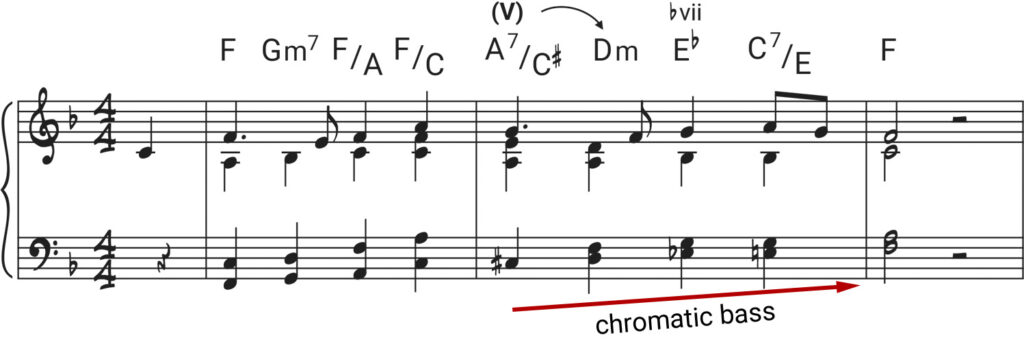As 2023 comes to a close, I wanted to share with you one last tutorial, and what tune to better do that with than the New Year’s Eve classic “Auld Lang Syne”? In this blog post, I’ll be showing you how to use inversions and so-called “walk-ups” to reharmonize “Auld Lang Syne”. At the end of the post, you’ll find the full version.
Step 1: Play the Melody with Basic Chords
Before we start reharmonizing, it’s crucial to establish a foundation. Begin by playing the melody of “Auld Lang Syne” and accompanying it with basic chords. These chords are your anchors; they should fit the melody well and provide a solid baseline for further harmonic exploration.

Step 2: Create Inversions
Once you have your basic chords, the next step is to create inversions. Inversions involve rearranging the notes of a chord so that a note other than the root is the lowest. Playing inversions under different parts of the melody will create a more interesting bass movement. This step adds depth to your arrangement and begins to differentiate it from the original melody’s straightforward chord progression.

Step 3: Create Walk-Ups
To add more movement and interest, we can introduce so called walk-ups. These involve adding passing chords between a root position chord and its first inversion. This technique helps in smoothing the transitions between chords and adds a sense of movement. It’s a subtle way to enhance the harmony without overshadowing the main melody.

Step 4: Add Chromaticism
The final step is to introduce a little more tension in your arrangement. We’ll do this by using chromaticism in the bass lines (i.e. moving up or down in half steps) and introducing secondary dominants and non-diatonic chords. In the example below, I’ve used a A7/C# chord as the secondary dominant chord of Dm7 (check out my free Reharmonization Quick Guide for more information on secondary dominants). I’ve used E flat major as a non-diatonic chord (♭vii), to create a chromatic motion in the bass line.

Full Version
Below is the full reharmonization, where I’ll be using the above steps throughout. I’m also using additional techniques such as diminished chords, parallel minor chords, and tritone substitute chords. Hope you enjoy this one! Let me know what you think of this technique in the comment below, and make sure to grab that Reharmonization Quick Guide for more reharmonization tips.

